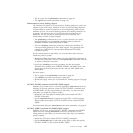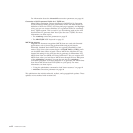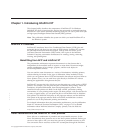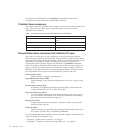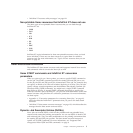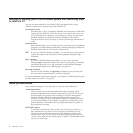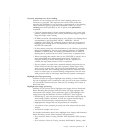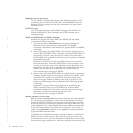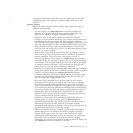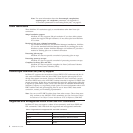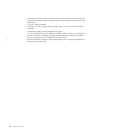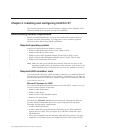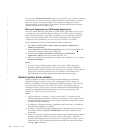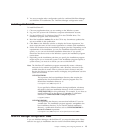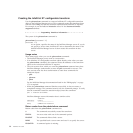code points. This function does not correct any other type of code page
conflicts that occur after manually correlating Xerox resources to AFP
resources.
Stapling support
When you submit jobs that request stapling, these restrictions apply to
InfoPrint XT processing:
v You must specify the xhonorstaple=yes conversion parameter for
InfoPrint XT to process jobs that contain stapling instructions. The
default is that InfoPrint XT ignores stapling commands.
v Differences exist in the stitching hardware of InfoPrint Solutions
Company cut-sheet printers and Xerox LPS cut-sheet printers. Because of
this, InfoPrint XT does not support the Xerox stapling commands
FACEUP and NTO1, either when used independently or when used only
with each other. InfoPrint XT only recognizes FACEUP and NTO1 when
a job uses them with the STAPLE command. Together, STAPLE=YES,
FACEUP=YES, and NTO1=YES or NTO1=n indicate that stapling should
occur. n is a positive number.
v When a Xerox LPS printer processes the STAPLE command, it always
drives the staples into the upper-left corner of the sheets, as viewed in
portrait orientation. This is true even if the report is actually in
landscape orientation. If you specify the xstapleorient=yes conversion
parameter for the job, InfoPrint XT detects any reports whose first pages
are landscape. It then staples them in the lower-left corner of the sheets,
as viewed in portrait orientation. This is equivalent to the upper-left
corner when you view the sheet in landscape orientation.
v InfoPrint XT assumes that the default printing order that was established
on the Xerox printer at SYSGEN is 1TON. If you specify NTO1 at printer
SYSGEN, you must include the xstaplesysgen=nto1 conversion
parameter. Otherwise, InfoPrint XT ignores stapling commands in JDLs
and JDEs that jobs invoke internally if the starting JDL and JDE pair
does not specify that stapling should occur.
v The Xerox NTO1 command forces the LPS printer to delay output
processing until the input processing for the entire report is complete.
For this reason, input processing might not recognize the end of the
report until it identifies the beginning of the next report. This might not
occur until input processing identifies a BANNER page at the beginning
of the next job. This can cause the printer to retain attributes from one
job and apply them to subsequent jobs. InfoPrint XT does not apply
attributes of one job to the next job. Instead, it processes each job using
only the attributes that are specific to the job.
v InfoPrint XT cannot detect if the destination IPDS printer supports
stapling. When you specify stapling with the xhonorstaple=yes
conversion parameter and value and then convert a Xerox job that has
JDEs that specify STAPLE=YES, InfoPrint XT includes stapling
information in the AFP that it generates. This is always the case, even if
the destination printer does not support stapling.
v Each of the InfoPrint Solutions Company printer models that support
stapling imposes its own limits on the number of sheets, the paper
weights, and the paper sizes that it can staple. InfoPrint XT cannot
automatically detect those limits. It does not reference any information
about them when it generates an AFP job that includes stapling
information. You must set the maximum number of sheets to staple with
the xstaplemax conversion parameter, as needed.
Chapter 1. Introducing InfoPrint XT 7
|
|
|



